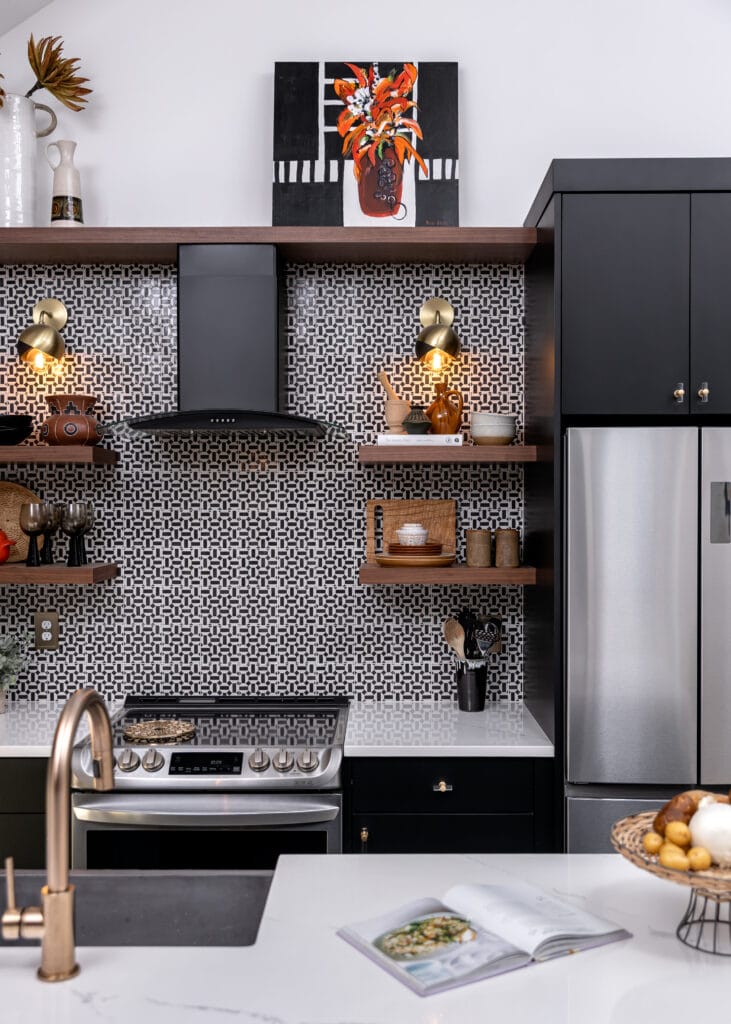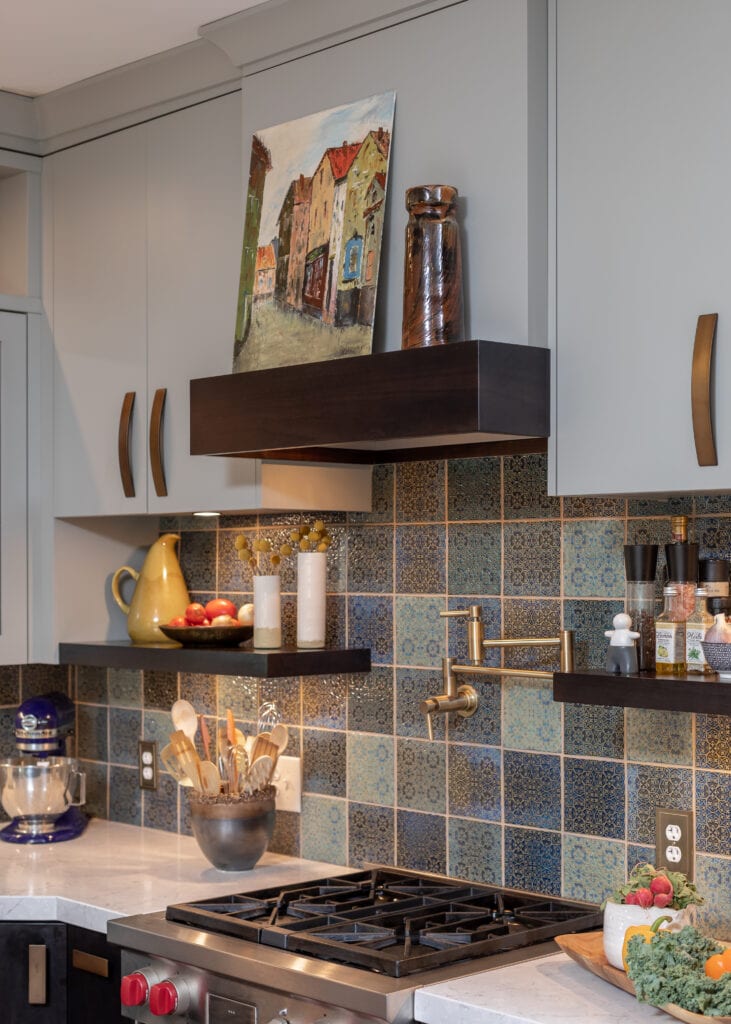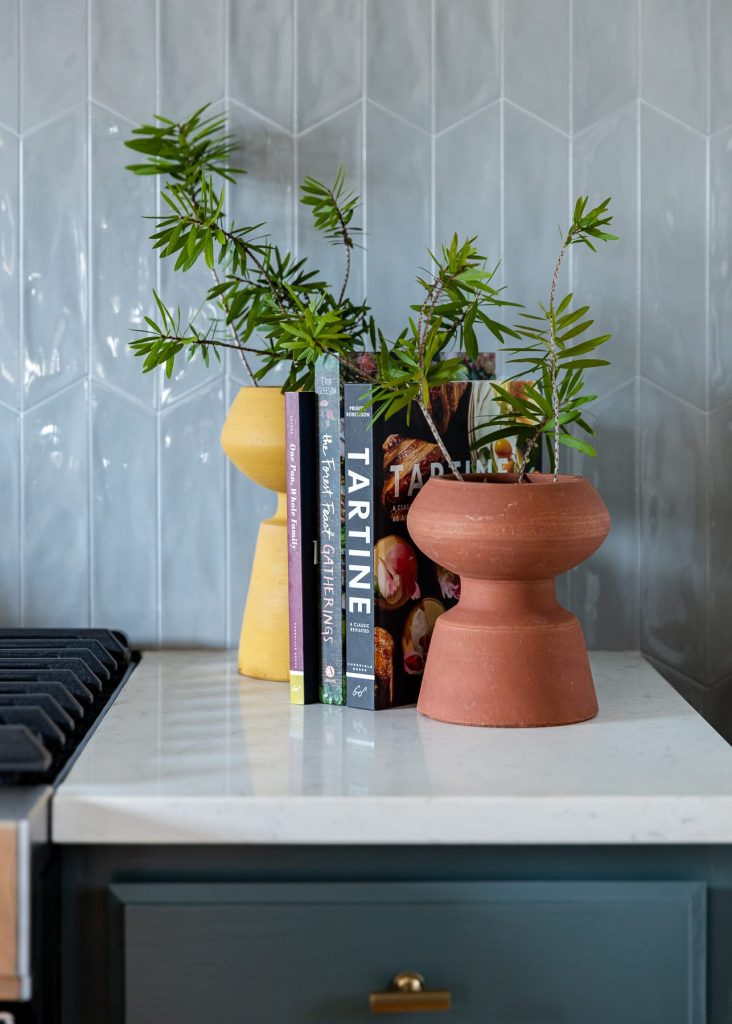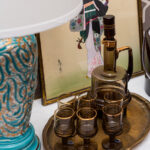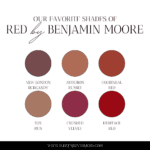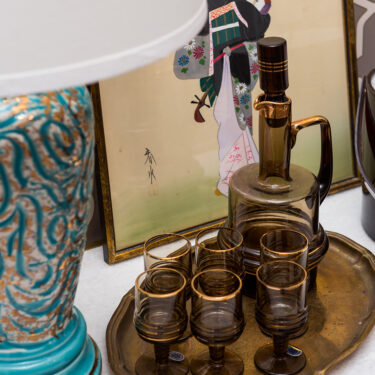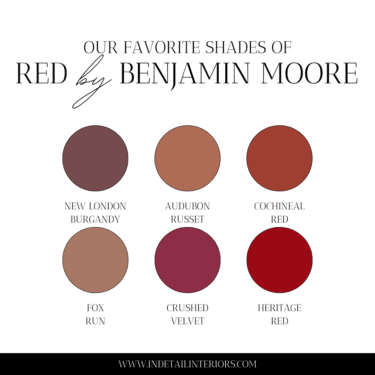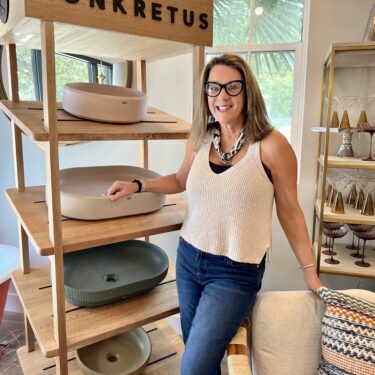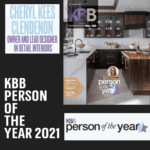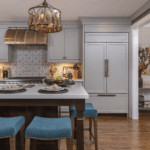
How to Choose the Perfect Kitchen Backsplash: 3 Essential Tips!
We love it when you share!
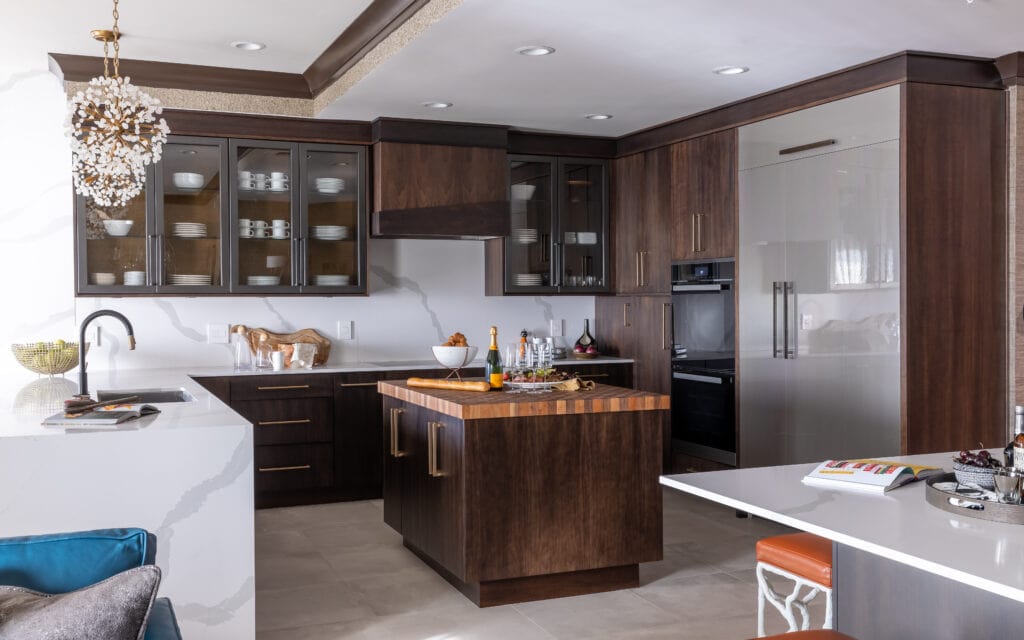
Kitchen backsplashes are essential for protecting your walls from water, grease, food splatter, the potential damage from cooking equipment, etc.; however, that does not mean you have to compromise your style for function. In fact, your backsplash is an opportunity to introduce additional color and texture and enhance your kitchen design overall. Here are our design team’s three essential tips for selecting a backsplash that will meet your needs AND showcase your unique personality.
#1: CONSIDER THE FUNCTIONALITY, DURABILITY, & MAINTENANCE OF THE BACKSPLASH MATERIAL
Oftentimes your kitchen is one of the most highly trafficked areas of your home. Therefore, one of the first things to consider when selecting a backsplash material is how it will stand up to wear and tear. You need to know how easily the material can be cleaned, if there are any routine maintenance needs, such as sealing or polishing, and whether or not the material has any temperature limitations. For example, the best materials for behind your range are ceramic, porcelain, glass, or metal tiles, as they are nonporous and highly resistant to fading, heat, moisture, and staining. You would not put thermoplastic tiles there!
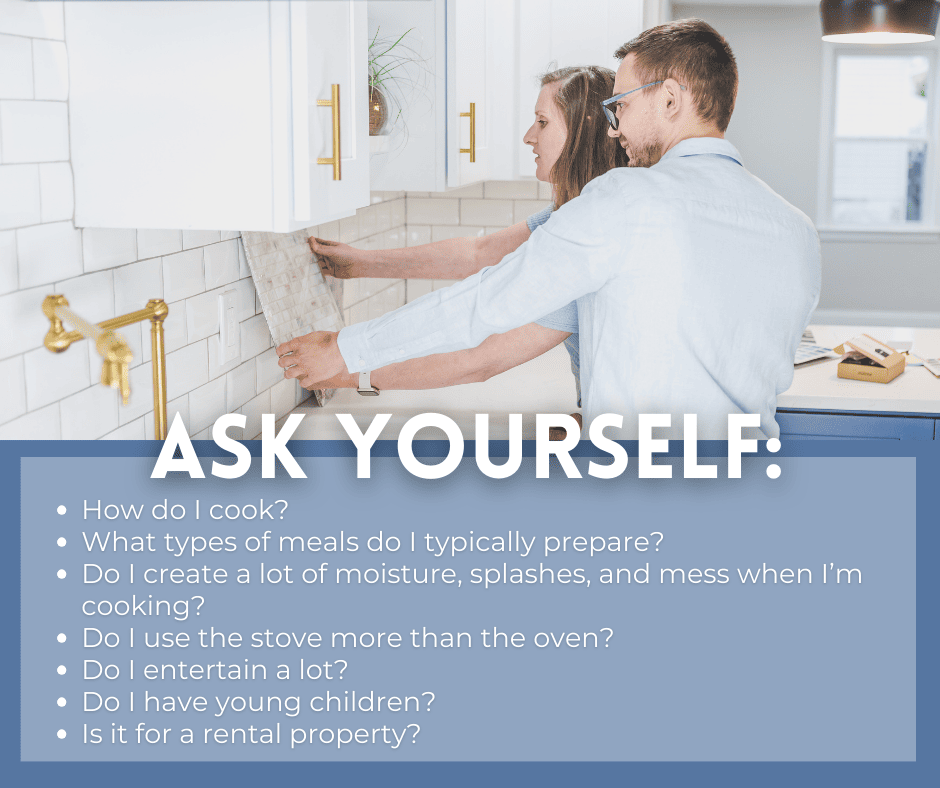
Don’t forget your grout! If left unattended, grout is an open invitation for dirt and grime to accumulate, so it is critical to keep your it sealed. We recommend purchasing a highly stain-resistant grout or avoiding grout altogether if you can. No one wants to spend copious amounts of time scrubbing their grout to remove a stain that could have been avoided entirely if the grout selection had been given more priority in the first place. It’s the backbone of your backsplash!
Note that all natural stone materials will need to be sealed, typically annually, to protect the surface from staining and maintain its overall appearance. However, don’t let that scare you! The sealing process is simple and can be completed in minutes – no need to call a professional. Besides, the impact and statement made by having a full-height natural stone slab form backsplash is more than worth it.
#2: HIGHLIGHT THE MAIN FOCAL POINTS IN THE KITCHEN: ABOVE THE RANGE & ABOVE THE SINK
When you walk into your kitchen, where do you naturally find yourself looking? Chances are, it’s probably to the areas above the range and the sink. These high-impact zones are perfect opportunities to play with more elaborate designs. The easiest way to bring in some more visual interest is through the pattern, color, or texture of your chose material.
Don’t want to use a bold color? You can introduce patterns to these areas by changing the layout of the tile when installing it. For example, you might lay it stacked or in a specialty style, such as basket weave or herringbone, instead of the traditional offset. The layout you choose will be influenced by the overall style you are going for, as certain layouts may cause it to skew more modern or classic. Here are a few popular layout patterns for installation along with helpful downloadable PDFs. Since tiles come in myriad shapes and colors, your options for patterns are virtually unlimited.
The color palette of your selected material should always either contrast or complement the finishes of your cabinetry, countertops, and flooring. This ensures your design is cohesive and allows your eye to travel smoothly throughout the room. In other words, this is a crucial part of setting the tone and feel of the space! Just as important as the tile color, is the color of your grout. Complementary grout colors allow your tile to be the center of attention and have a more classic feel, while contrasting grout colors will pack an extra punch and can lean more modern.
Textured materials will add a sense of depth and character. There are a lot of unique, imperfect, or specialty tiles on the market today, including both hand-painted and hand-cut. Antique or vintage options have also increased in popularity and can add more visual interest and history to your design. If you do not have the time to search for genuine antique tiles or are looking for a more budget-friendly option, consider selecting new ones with antique-inspired designs.
#3: BE REALISTIC WITH YOUR BUDGET
While there are many budget-friendly options available, it’s worth taking the time to weigh the overall cost of the backsplash material and its installation against the longevity of the backsplash itself. Frankly, if you will get tired of it in 5-10 years, then it is not the right choice for you… after all, trends come and go. We recommend changing your mindset altogether and thinking of each finish selection as an investment in the value of your home and well-being – that is exactly what it is!
That being said, you can still find quality options without breaking the bank. First, you’ll need to determine the square footage amount of the material required. Do you want it to cover the entire wall, go up to the ceiling, or cover only a portion?
The type of material you select will also impact your budget. The most popular option, ceramic tile, is also the most inexpensive due to its wide availability. However, natural stone in slab form material is typically the most expensive. Lastly, whether you hire a professional to handle the installation or if you believe you have the time and expertise to do it yourself will significantly impact your bottom line as well. Check out this simple breakdown of different material types and their pros/cons here!
At the end of the day, only you can determine which option is the best fit for your lifestyle and your home… but getting trusted, valuable advice from an experienced professional (ahem – that’s us) never hurts!
We hope you find this information helpful as you
navigate the ever-changing building or remodeling process.
Remember, it’s all in the details!
Categories
- bathroom design tips
- building new home
- Business
- Closets
- Color In Detail- All about color in design!
- Countertops
- Design Disasters
- Design tips
- Designer Drama-Stories from behind the scenes
- Details
- DGD- Business Truths! A blog.
- electrical
- Entertaining in Detail- The party is here!
- Featured
- Funny Design Stories
- Furniture
- general remodeling and building
- Great Materials
- Healthy Kitchens
- In Detail Says-Telling it like it is!
- Interior design
- Just cool stuff
- Kitchen
- kitchen design
- kitchen design tips
- Lifestyle
- lighting
- Natural stone
- Paint Tips
- plumbing fixtures
- Project Studies
- Shelving
- small baths
- Small Business Think Big- For Interior Designers and Decorators
- small kitchen design
- The Bath Designer- Insights on function, design and remodeling
- Tile
- Uncategorized
- Unique kitchens
- Vintage
- wall ideas
- wonderful ideas

